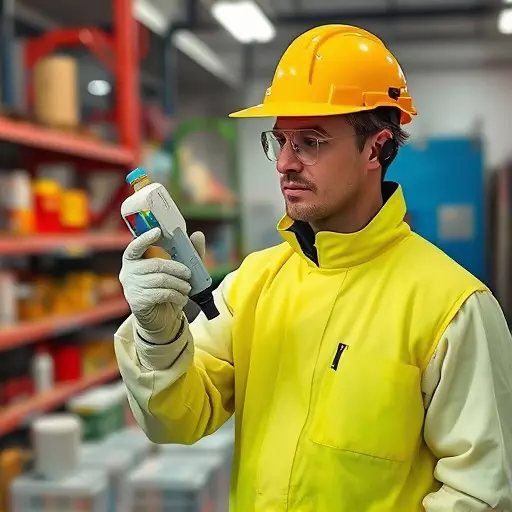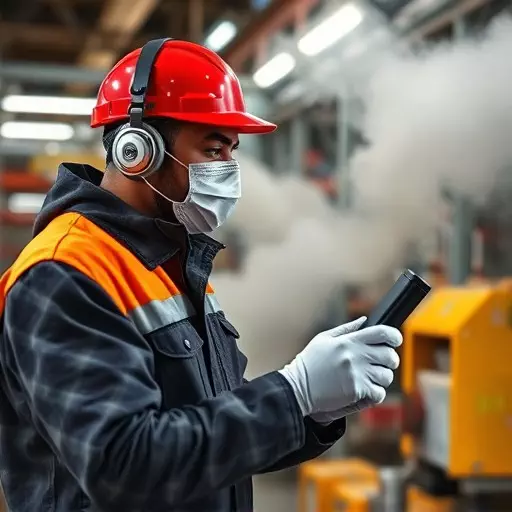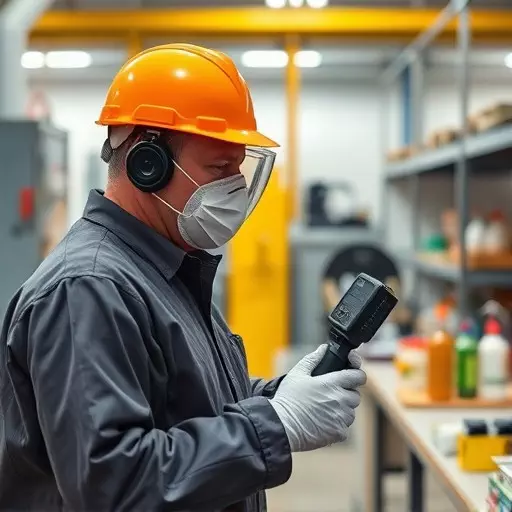In manufacturing, ensuring worker safety through effective employee exposure monitoring is paramount. This article delves into the essentials of workplace air quality testing and hazardous substance monitoring, offering a comprehensive guide to maintaining healthy environments. We explore the basics of understanding employee exposure, highlighting the critical role of air quality assessments in identifying risks. By analyzing data and adhering to regulations, manufacturers can implement strategic solutions for continuous improvement, fostering safer conditions through proactive hazardous substance monitoring.
- Understanding Employee Exposure Monitoring: The Basics
- Importance of Workplace Air Quality Testing for Safety
- Identifying and Monitoring Hazardous Substances in Manufacturing
- Implementing Effective Monitoring Strategies and Systems
- Data Analysis and Interpretation for Better Workplace Conditions
- Regulatory Compliance and Continuous Improvement in Exposure Monitoring
Understanding Employee Exposure Monitoring: The Basics

Employee Exposure Monitoring is a critical process aimed at ensuring the safety and health of workers in manufacturing environments. It involves regular assessments to measure and evaluate employees’ exposure to various hazardous substances present in the workplace air quality. These substances can range from toxic chemicals, fumes, dusts, to even biological agents, all of which can pose significant risks if not managed properly.
The basic principle behind employee exposure monitoring is to identify potential hazards, quantify their levels, and take corrective actions when necessary. This involves conducting regular workplace air quality testing at different locations within the manufacturing facility. By collecting samples and analyzing them, employers can determine the concentration of hazardous substances in the air. This data is then used to assess if the current exposure levels are above safe thresholds set by occupational health standards and regulations.
Importance of Workplace Air Quality Testing for Safety

Identifying and Monitoring Hazardous Substances in Manufacturing

In manufacturing environments, identifying and monitoring hazardous substances is a critical component of ensuring worker safety and maintaining workplace air quality. Regular employee exposure monitoring and workplace air quality testing are essential to identify potential risks and ensure compliance with health and safety regulations. By implementing these practices, manufacturers can proactively manage exposure to harmful chemicals, fumes, dusts, and gases that may be present in the work environment.
Effective hazardous substance monitoring involves conducting thorough assessments of all operations and processes within the facility. This includes identifying sources of contamination, evaluating employee tasks, and understanding the potential health impacts associated with various materials used. Once identified, these substances should be regularly monitored using advanced tools and techniques to measure their concentration in the air and assess any risks to workers’ health over time.
Implementing Effective Monitoring Strategies and Systems

In the realm of manufacturing, implementing effective exposure monitoring strategies and systems is paramount for ensuring worker safety and maintaining optimal workplace conditions. Employee exposure monitoring involves regular assessments to gauge levels of hazardous substances in the air, preventing potential health risks associated with prolonged exposure. This proactive approach leverages advanced technologies such as real-time sensors and data analytics to provide continuous surveillance of airborne contaminants.
Workplace air quality testing is an integral component of this process, meticulously identifying and quantifying various pollutants present in manufacturing environments. By integrating these findings into broader hazardous substance monitoring, companies can effectively tailor their safety protocols. This holistic strategy not only protects employees but also ensures compliance with regulatory standards, fostering a safer, more productive work environment.
Data Analysis and Interpretation for Better Workplace Conditions

In the realm of employee exposure monitoring, data analysis plays a pivotal role in enhancing workplace conditions and ensuring the well-being of workers. By leveraging advanced technologies like real-time sensors and sophisticated analytics, manufacturers can gain deep insights into air quality, chemical concentrations, and other environmental factors. This enables them to identify potential hazards, set actionable benchmarks, and implement targeted strategies for mitigation. For instance, workplace air quality testing reveals the presence and levels of hazardous substances, prompting immediate action to improve ventilation or reduce emissions.
Interpretation of these data is crucial in making informed decisions. Trends spotted through analysis can highlight recurring issues, allowing proactive measures instead of reactive responses. This proactive approach not only enhances overall workplace safety but also fosters a culture of care and responsibility. By regularly monitoring hazardous substance exposure, manufacturers can ensure compliance with regulations and create a healthier, more productive environment for their employees.
Regulatory Compliance and Continuous Improvement in Exposure Monitoring



